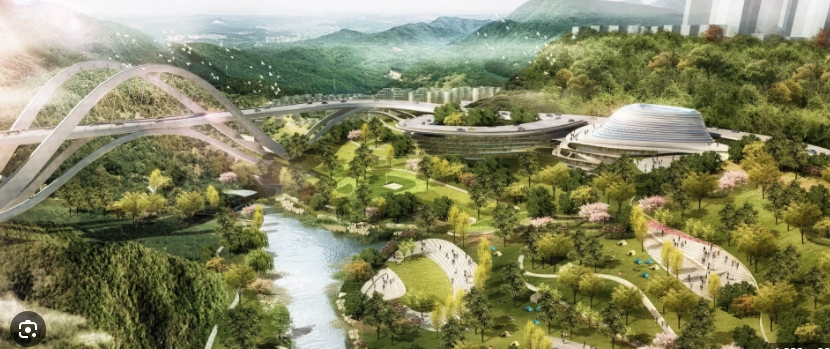Blurring the Lines: How Architecture Can Immerse with the Natural Landscape
In recent years, there has been a growing trend in architecture to seamlessly merge with the surrounding natural environment. This shift in design philosophy aims to create a harmonious relationship between man-made structures and the beauty of the natural landscape. By blurring the lines between indoors and outdoors, architects are able to create spaces that feel connected to nature, offering residents a more peaceful and rejuvenating living experience.
Blending Materials and Colors
One of the key ways that architects are able to merge their designs with the natural landscape is through the use of materials and colors that mimic the surrounding environment. By incorporating earth tones, natural materials like wood and stone, and greenery into their designs, architects are able to create buildings that visually blend in with their surroundings. This creates a seamless transition between the built environment and nature, allowing residents to feel more connected to the outside world.
Maximizing Natural Light and Views
Another important aspect of immersive architecture is the incorporation of natural light and views into the design. By strategically placing windows, skylights, and glass walls, architects are able to bring the beauty of the outdoors into the interior spaces of a building. This not only creates a sense of openness and spaciousness, but also allows residents to enjoy the ever-changing sights and sounds of nature from the comfort of their own home.
Creating Outdoor Living Spaces
In addition to bringing nature inside, architects are also designing outdoor living spaces that seamlessly blend with the natural landscape. From rooftop gardens to terraces and courtyards, these outdoor spaces provide residents with opportunities to relax, socialize, and connect with nature. By blurring the lines between indoor and outdoor spaces, architects are able to create fluid and dynamic living environments that enhance the overall quality of life for residents.
Embracing Sustainable Design Practices
Lastly, immersive architecture often incorporates sustainable design practices that help minimize the environmental impact of a building on its surrounding landscape. From green roofs and rainwater harvesting systems to energy-efficient heating and cooling systems, architects are finding innovative ways to reduce their buildings’ carbon footprint and enhance their connection to nature. By using sustainable materials and technologies, architects are able to create buildings that not only blend in with the natural landscape, but also actively contribute to its preservation and protection.
In conclusion, blurring the lines between architecture and the natural landscape offers a new and exciting approach to design that prioritizes harmony, sustainability, and wellness. By seamlessly integrating buildings with their surroundings, architects are able to create spaces that inspire and delight residents, while also fostering a deeper connection to the beauty and wonder of the natural world. This innovative design philosophy is shaping the future of architecture, as more and more architects seek to create buildings that not only stand out, but also blend in with the magnificent landscape that surrounds them.

